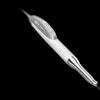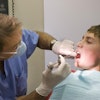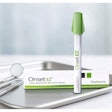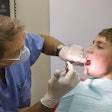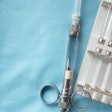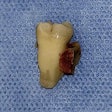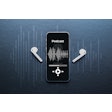A new study evaluated the safety of succinylcholine alternatives for pediatric patients who require neuromuscular blockade for treatment.
With dentists forced to look for alternatives to succinylcholine, a study presented at the recent European Society of Anaesthesiology's Euroanaesthesia 2015 Congress in Berlin evaluated the safety and efficacy of an alternative, neuromuscular blockade with rocuronium and reversing that blockade with sugammadex.
More than 50 patients ages 2 to 10 who were scheduled for outpatient treatment of three or more teeth were enrolled in the study. Almost 75% (38) of the children were younger than 4 at the time of the study. Treatments lasted an average of just under two hours (about 112 minutes).
The researchers used 0.55 ± 0.02 mg/kg of rocuronium for neuromuscular blockade. At the end of treatment, 2 mg/kg of sugammadex was given. Sugammadex was approved for use in the European Union in 2008, but has yet to receive approval by the U.S. Food and Drug Administration.
The average time to reach neuromuscular blockade sufficient for intubation was 101.4 ± 3.6 seconds, according to the study authors. Conditions for intubation were rated as excellent (41 children) or good (11) in 99% of the children.
The authors reported no marked hemodynamic changes, arrhythmias, or other complications during tracheal intubation, nor was sugammadex accompanied by any reactions or complications. Average extubation time "with the possibility of transfer to spontaneous breathing and extubation" was 140.3 ± 13.1 seconds.
Rocuronium "provides optimal conditions for intubation of children without the risk of hemodynamic, anaphylactic reactions," concluded the authors, adding that sugammadex at the dose of 2 mg/kg "provides a complete, fast, and safe reversal of neuromuscular block in children."
The study was led by Vadim Gorokhovskiy of the Far Eastern State Medical University in Khabarovsk, Russia.
